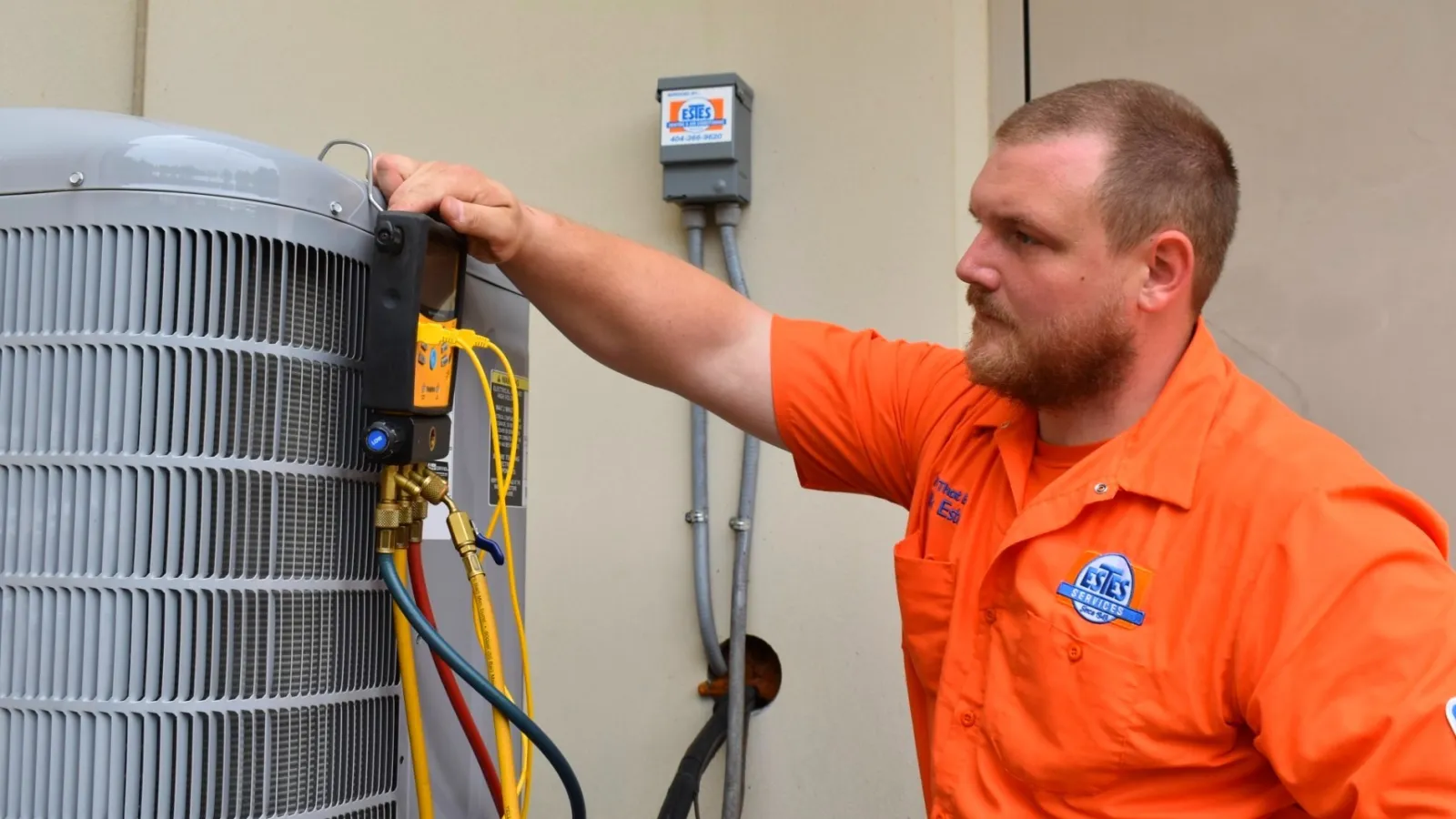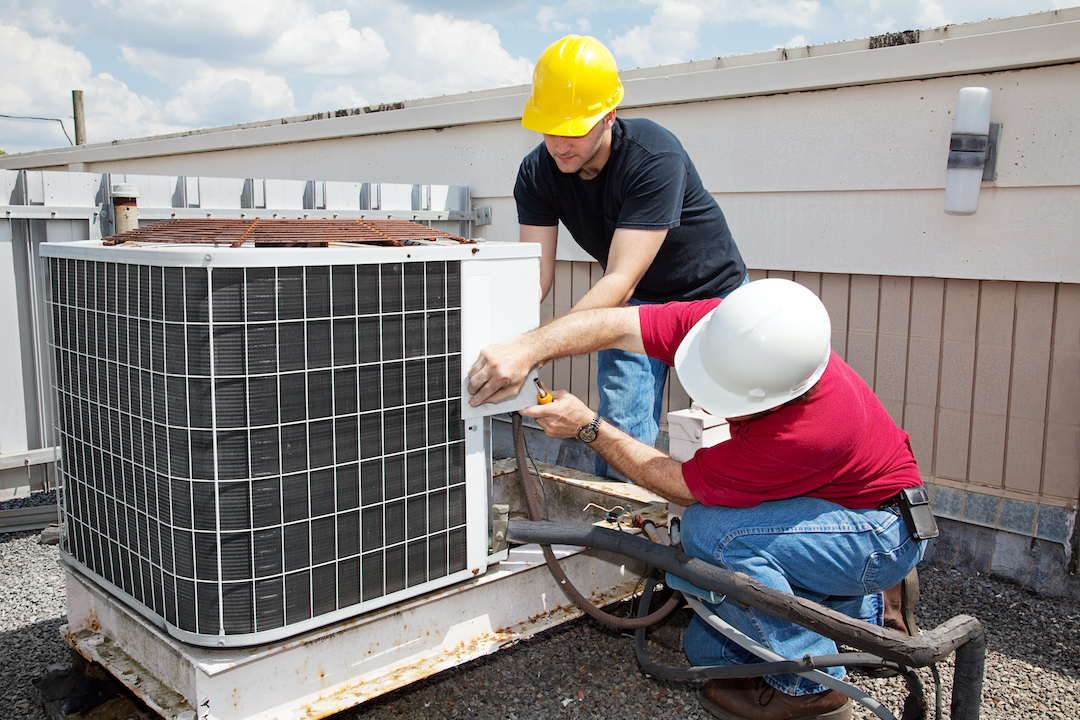Step-by-Step Timeline During a Professional furnace replacement
Step-by-Step Timeline During a Professional furnace replacement
Blog Article
Just How a Warmth Pump and Heating System Collaborate to Enhance Your Home's Home heating Efficiency
Understanding just how a warmth pump and heating system collaborate is important for homeowners looking for effective heating services. Each system has its toughness, supplying a balanced strategy to home convenience. The heatpump stands out in moderate temperatures, while the heater provides quick warmth throughout extreme cold. This harmony not only minimizes power costs but also enhances the life-span of both home appliances. What aspects influence this cooperation, and just how can homeowners maximize their benefits?
Recognizing Heat Pumps: Exactly How They Work
Many people might be strange with their inner workings, warmth pumps play an important duty in modern home heating systems. These gadgets operate by moving heat from one place to another, making use of the principles of thermodynamics. In cooler months, a heatpump removes warm from the outside air, ground, or water, and transfers it inside your home to heat the space. On the other hand, throughout warmer months, it can reverse the process, functioning as an ac unit by getting rid of warmth from inside to the outside.Heat pumps contain an evaporator, growth, condenser, and compressor shutoff. The refrigerant within the system takes in warmth as it evaporates at reduced temperatures and pressures. The compressor after that enhances the stress and temperature level of the cooling agent, permitting it to release warm as it condenses. This effective process can substantially decrease energy usage compared to conventional home heating techniques, making heatpump a sustainable choice for climate control in homes.
The Function of Furnaces in Home Heating
Heaters play a necessary function in home heating by supplying a trusted resource of warmth throughout the cooler months. They run by creating heat via burning or electrical resistance, dispersing it throughout the home by means of ducts or radiant systems. The performance of a furnace is often gauged by its Yearly Fuel Usage Performance (AFUE) rating, which shows exactly how efficiently the device transforms fuel into heat.Furnaces can make use of different energy resources, consisting of gas, gas, electrical energy, or oil, permitting property owners to choose one of the most ideal choice for their demands. Unlike heatpump, which might struggle in severe cold, heating systems maintain consistent performance, ensuring that interior temperature levels remain comfortable despite outdoor problems. In addition, modern-day furnaces often come equipped with sophisticated innovation, such as variable-speed blowers and wise thermostats, boosting their effectiveness and responsiveness. This convenience makes heating systems an essential component in all-encompassing home heating techniques.

Benefits of Using Both Systems Together
Incorporating the toughness of both furnaces and heatpump can bring about an extra efficient and efficient home heating remedy. Using both systems allows house owners to benefit from the heatpump's power performance throughout milder temperature levels while counting on the furnace for even more extreme cold problems. This double strategy can considerably decrease energy expenses, as heat pumps eat less electrical energy than traditional home heating methods when temperature levels are moderate.Additionally, utilizing both systems together can boost convenience degrees in the home. Heatpump can offer regular, also heating, while furnaces can rapidly elevate ambient temperature levels when needed. The combination of both systems can prolong the life-span of tools by reducing wear and tear on each system, as they share the workload. Inevitably, home owners can take pleasure in a balanced, cost-efficient home heating service that adjusts effortlessly to varying climate condition, making sure a cozy and inviting home throughout the winter months.
Just How Heat Pumps and Furnaces Complement Each Various Other
They create a corresponding heating system that takes full advantage of effectiveness and convenience when home owners incorporate warmth pumps and heaters. Heatpump run by transferring heat from the outdoors air or ground, making them very effective in modest environments. They excel during milder temperatures, supplying cost-efficient home heating. On the other hand, heating systems generate warm with burning or electrical resistance, supplying solid, instant heat throughout severe chilly conditions.The mix of these 2 systems enables for vibrant changes based upon temperature level changes. Throughout warmer months or milder winter days, the heatpump can take the lead, saving energy and lowering prices. As temperature levels drop, the heater can seamlessly engage, guaranteeing consistent heat throughout the home. This harmony not only optimizes energy use yet additionally enhances the lifespan of both systems, as each system operates within its optimal performance array. Together, they produce a balanced environment that adapts to varying climate demands.
Optimizing Performance: Tips for Homeowners
Home owners can boost their heating efficiency via numerous useful techniques. Establishing a normal upkeep timetable, incorporating smart thermostat modern technology, and applying effective insulation and securing solutions are vital actions. These actions not only enhance convenience yet additionally decrease power costs.
Normal Maintenance Arrange
To guarantee optimal heating performance, establishing a normal maintenance schedule is crucial for any type of home. Property owners should prioritize routine inspections of both heatpump and heaters to identify peak performance. This includes transforming air filters every one to three months, as clogged filters can considerably lower efficiency. Furthermore, organizing expert maintenance a minimum of as soon as a year allows specialists to recognize and address prospective concerns before they intensify. Homeowners ought to likewise cleanse the heat pump's outside system to protect against debris accumulation that can prevent airflow. By adhering to a routine maintenance routine, property owners not only boost their heater' effectiveness yet additionally prolong their life expectancy, leading to greater comfort and reduced energy costs throughout the colder months.
Smart Thermostat Integration
Incorporating a wise thermostat into a home heating unit can greatly improve power effectiveness, particularly as it permits for specific control over temperature level setups. These tools can discover the house owner's routine and preferences, automatically readjusting the temperature level to maximize convenience while decreasing power use. They can reduce heating throughout times when the home is unoccupied, minimizing unneeded consumption. Several wise thermostats also supply real-time energy usage data, hop over to here allowing house owners to make informed choices regarding their home heating routines. Additionally, remote accessibility by means of mobile phone apps permits users to change settings from anywhere, making sure the home is cozy upon return. Generally, smart thermostat assimilation not just improves convenience yet significantly adds to energy financial savings and effectiveness.
Insulation and Securing Solutions
Smart thermostats play a crucial my blog role in energy performance, but their efficiency can be significantly boosted by proper insulation and securing remedies. House owners ought to focus on shielding attics, wall surfaces, and floors to minimize heat loss. High-grade insulation products, such as spray foam or fiberglass, can significantly boost thermal resistance. In addition, securing spaces around doors, air ducts, and home windows prevents cold air seepage and warm getaway. Weatherstripping and caulking are efficient approaches for attending to these leakages - furnace replacement. Normal examinations for air leakages, together with the usage of blower door examinations, can assist determine trouble areas. By investing in insulation and securing, homeowners can maximize the efficiency of their heater, eventually causing minimized energy usage and lower energy costs
Typical Myths About Heat Pumps and Furnaces
What misconceptions border heatpump and heating systems? Many people erroneously believe that warmth pumps are inefficient in colder environments. In truth, contemporary heatpump are developed to run efficiently also in reduced temperatures, giving trusted heating throughout winter season. An additional typical misconception is that heaters are always extra efficient than heatpump. Nonetheless, this depends upon the specific energy resources and effectiveness scores of the systems in question. Some might additionally assume that using both systems at the same time is unneeded, however in truth, this combination can enhance home heating efficiency, particularly throughout extreme climate conditions. In addition, people commonly assume that warmth pumps require constant maintenance, when in truth, they have comparable upkeep requires to standard home heating systems. By disproving these myths, property owners can make even more informed decisions regarding their heating alternatives, ultimately causing boosted convenience and energy effectiveness in their homes.
Upkeep Factors To Consider for Combined Solutions

Frequently Asked Concerns
Can Warmth Pumps Work Properly in Exceptionally Cold Climates?
Heat pumps can have a hard time in exceptionally cold climates due to decreased performance and warmth extraction restrictions. Developments in technology have actually led to versions designed for much better performance in such problems, enhancing their practicality in severe environments.
For How Long Do Warm Pumps and Furnaces Usually Last?
Warmth pumps typically last 15 to twenty years, while furnaces have a life expectancy of 15 to three decades. Normal upkeep can expand their long life, making certain effective operation and lowering the demand for premature replacements.

What Is the Ordinary Expense of Installing Both Equipments?
The average expense of installing both a heatpump and a furnace generally varies in between $5,000 to $10,000 - ductless mini splits. Aspects affecting this expense consist of system dimension, installment complexity, and local labor rates
Are There Tax Obligation Incentives for Making Use Of Energy-Efficient Heating Solutions?
Several house owners ask concerning tax obligation incentives for energy-efficient furnace. Numerous federal and state programs commonly supply credits or discounts, motivating the fostering of lasting technologies to reduce power intake and advertise ecological responsibility.
Just how Do I Choose the Right Size Heatpump and Heater?
Picking the appropriate size heat pump and furnace involves calculating the home's square video, thinking about insulation high quality, and reviewing regional climate. Consulting a specialist can ensure excellent system performance and power performance based on particular needs. furnace replacement. Understanding exactly how a warm pump and heating system work together is necessary for property owners looking for effective home heating options. In chillier months, a warm pump removes warmth from the outdoors air, ground, or water, and transfers it inside your home to warm the living area. When property owners integrate heat pumps and heaters, they develop a corresponding home heating system that maximizes efficiency and convenience. Warmth pumps run by transferring heat from the outdoors air or ground, making them extremely effective in modest climates. Heat pumps can battle in very cold environments due to reduced effectiveness and warm removal restrictions
Report this page